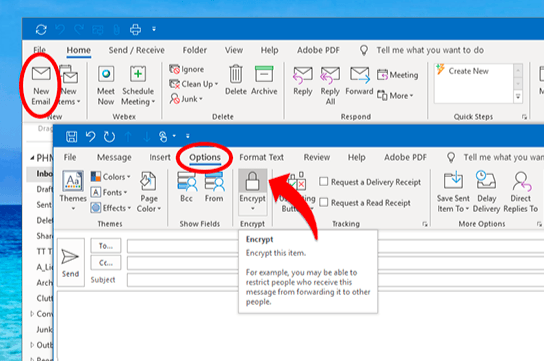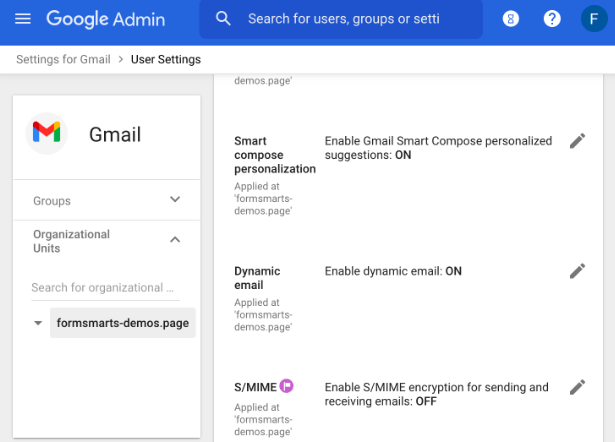It’s no secret that most cybersecurity attacks happen through email, so it’s crucial to know how to send secure email in Outlook, Yahoo, and Gmail. These are three of the most popular email platforms globally but aren’t exactly known for their security levels. That’s not to say that Outlook, Yahoo, or Gmail aren’t safe to use; however, their default settings aren’t likely to satisfy anybody conscious of cybersecurity.
In this article, we look at why secure email is incredibly important. We then look at how to send a secure email on all three previously mentioned platforms, Outlook, Yahoo, and Gmail.
What is secure email?
You’re probably thinking – isn’t all email secure by default? The truth is that there are a lot of email services that only provide the basic levels of security. The term ‘secure email’ refers explicitly to encryption. Encryption is a way of scrambling data and making it impossible to read. If your email were to be intercepted, there would be no way of uncovering its contents.
There are two different kinds of email encryption, transport-level and end-to-end. Transport-level encryption includes TLS and SSL and works only during the email sending process. The best option is end-to-end encryption, such as PGP or S/MIME. This means that the email is encrypted at both end-points and is almost impossible to penetrate.
Why is secure email important?
The large majority of cyberattacks happen via email. It’s one of the easiest ways to penetrate cybersecurity flaws, and a surprising number of users still click on phishing links. Viruses, trojans, and other kinds of malware are contracted via email and can only be avoided by ensuring your email provider is safe and secure.
Secure email also means that your personal information stays private. Emails can be easily intercepted, resulting in a serious data breach or even identity fraud. It’s strongly recommended that you do not include sensitive information in emails, such as bank account details or similar. However, if you do, you should always use 100% secure email.
Why isn’t my email provider secure?
Outlook, Yahoo, and Gmail aren’t considered some of the most secure email providers. This doesn’t mean that you shouldn’t use them, but that you should be vigilant when doing so. Gmail, in particular, is actively avoided by the cybersecurity conscious because of its tracking habits. Gmail scans your email messages to serve you with ads elsewhere on the internet – quite invasive, right?
So there are two main reasons why your email provider isn’t secure. It either doesn’t prioritize encryption because it’s not its focus, or the provider avoids it altogether for marketing and snooping purposes.
How to send secure email on Outlook
Outlook uses TLS encryption which means messages are encrypted while sending an email but doesn’t guarantee the same after the email arrives at its destination. So, in a nutshell, the message could be at risk of a security breach while sitting in the recipient’s inbox, even when using TLS. You will need to enable S/MIME encryption. Follow the instructions below to learn how to do this?
Here’s how to send an encrypted email on Outlook:
- Log into your Outlook email app and create a new message
- Click on the options button
- Select encrypt
- Click ‘encrypt this item’

The only downside to doing this is that the recipient will also need to have S/MIME enabled; otherwise, they will be unable to read the message.
How to send secure emails on Yahoo
Considering Yahoo is one of the biggest brands in the world, it’s disappointing that users should have to look for higher levels of email security.
Yahoo uses TLS by default but doesn’t use S/MIME, and this doesn’t look set to change at the time of writing. You will need to install third-party encryption software to send S/MIME emails through Yahoo.
How to send secure emails on Gmail
Gmail does have S/MIME already built-in, but it’s only for specific users. For example, if you’re using a standard personal Gmail account, you can’t use it. You will need to have a business or education account, otherwise known as G Suite, and pay for the privilege of S/MIME. If you are part of a G Suite plan, you will need to ask your system administrator to enable S/MIME for you.

If it’s enabled, you will see a lock icon appear next to the recipient’s name you’re sending an email to. Without S/MIME enabled, your Gmail emails are sent with TLS, which is similar to what is offered by Yahoo. If you don’t want to pay for a G Suite account, you can also use a third-party tool to add an extra layer of encryption, such as a secure browser.
Email encryption apps
An alternative to adjusting the settings would be to use an email encryption app. This is generally open-source software that is designed and created by cybersecurity experts. Apps like this are particularly useful if you’re a beginner and don’t feel comfortable within the advanced settings menu.
Some of the most popular email encryption apps include Android Privacy Guard and OpenKeychain.
Encrypted email providers
Even with these additional settings adjusted, Outlook, Yahoo or Gmail are not the best options if you’re looking for the most secure email providers. Several platforms out there have prioritized email encryption and have created user-friendly and powerful email services.
Here’s a list of the best-encrypted email providers:
- Proton Mail
- Zoho Mail
- Mailfence
- Tutanota
With all of the information above, you should now be able to send secure emails at all times and protect your private messages and information.

Hi, I'm Cliff. I'm based in Cleveland, Ohio, with my wife and two kids.
I have a keen interest in cybersecurity and have been writing about it for around a decade now. Due to my background in computer science, I am familiar ...
Read more about the author